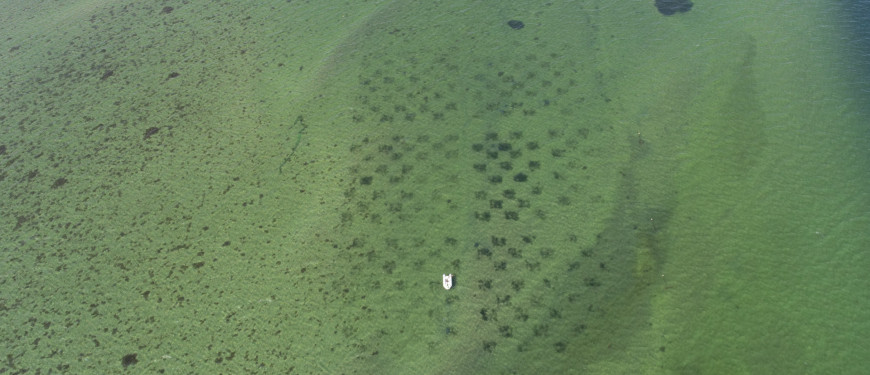The increasing pressure on aquatic ecosystems by eutrophication and climate change require urgent actions to mitigate detrimental impacts. Our research focuses on restoring habitats that are essential to improve ecological conditions and allow the return of biodiversity and ecosystem functions. We apply various restoration approaches both in marine and freshwater ecosystems. Restoration approaches in marine areas include managed realignment to create new coastal lagoons, sand-capping of areas with fine sediment, seagrass transplantation, and establishment of stone reefs and blue mussel beds. Freshwater restoration approaches involve chemical lake treatments with aluminum or Phoslock, and pretreatment of the soil before restoration of lakes, establishment of new and former wetlands to decrease nutrient loading of downstream areas, using buffer zones and various filter materials for nutrient removal. All these restorations can be implemented individually and/or in combination. We have in several habitats tested the combination key restoration approaches to assure resilience and increase the chances for regime shifts. We are collaborating with various international partners, the Danish Environmental Protection Agency, municipalities, and private companies.
Research projects:
- Nye danske søer (New Danish lakes) and Design of optimal environmental conditions and biodiversity
- Find en sø - et Citizen Science projekt (Find a lake)
- Vejledning til gennemførsel af sørestaurering, sørestaurering erfaringsopsamling, pilotvådområder myndighedsbetjening (authority service)
- Filsø
- Sund Velje Fjord - restoration of eelgrass, blue mussel beds and stone reefs
- Gyldensteen Strand – large managed realignment project in North Fyn, restoration of a coastal lagoon and lake
- Better Bird Life
